Of all the outer planet cycles, the Neptune Pluto cycle is the longest at about 493 years. The current cycle began in 1891 and we’re now approaching the end of the sextile that’s been running on and off since 1950. The final phase of this sextile runs from 2026 – 2032 with the wider orb building from around now, getting closer from 2023 and lasting until about 2035. There are multiple exact alignments along the way. Here are the basic dates for your diary:
- July and September 2026
- June and October 2027
- June and November 2028
- May and November 2029
- May and December 2030
- April 2031
- February 2032
Get a cuppa and get comfortable – this is a long one…! ☕️
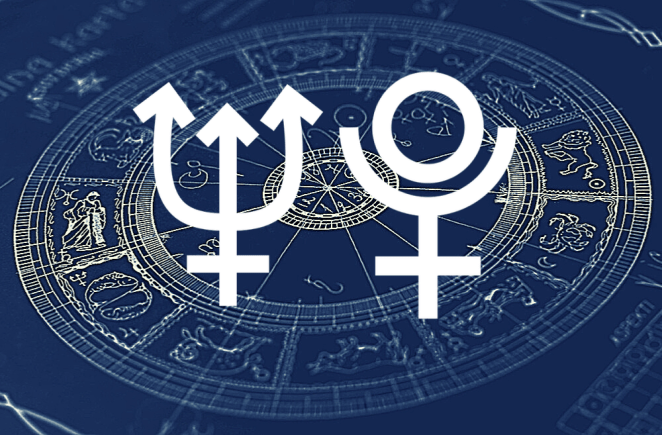
The Neptune Pluto cycle represents the transformation of religion and collective ideas about the divine and our beliefs about reality. These ideas influence how we structure society and build civilisation, so this cycle also coincides with the rise and fall of empires and cultures.
Pluto represents the archetype of transformation and evolution and is associated with the collective shadow, mass movements, and the drive for power. Neptune represents the archetype of transcendence and idealism and is associated with collective dreams, imagination, spirituality, and inspiration.
Neptune spiritualises and refines Pluto, encouraging reform through osmosis and gradual change. It seeps in slowly and influences through subtle inspiration and visionary shifts in consciousness. But it can also stir up the hidden depths of Pluto, giving voice to dark emotions and taboos and fuelling the desire for power. Power is also wielded through the use of images and mass emotion to create change.
This can be a positive process that inspires great faith and hope through uplifting ideas and visions. But it can also involve mass illusions and escapism that can end in death and destruction, as Liz Greene explains in Neptune:
“the combination of redemptive yearning and a compulsion to utterly annihilate the old order may result in a powerful millenarian vision, with nothing less than the end of the world required before Eden can be regained.”
This would represent the most extreme manifestation but as we’ve explored elsewhere, it reveals the deeper meaning of this cycle: our quest for redemption and the desire to return to, or remember, our true nature as divine beings. The reason it often plays out as a destructive force in the world is because most people can’t, or won’t, internalise the process.
In the 493 year cycle, Pluto goes around the zodiac twice while Neptune goes around three times. That means each conjunction happens a few degrees ahead of the previous one and they gradually shift through the signs. When a conjunction occurs in a new sign it represents an important turning point in the development of civilisation.
The last such shift happened in 1398 with the conjunction in Gemini. Prior to that, the conjunctions had been in Taurus since 1071 BCE so the shift into Gemini was a big deal. It coincided with the start of the European Renaissance when many seeds were planted that would grow over the following cycle.
The 1398 conjunction was also significant because it marked the halfway point in a 4000 year cycle which started with the Axial Age conjunctions in the 6th century BCE. This involved three major conjunctions within a short period when all three outer planets were in Taurus. It kicked off with the Neptune Pluto conjunction in 579 – 577 BCE, closely followed by Uranus Pluto in 578 – 575 BCE, and Uranus Neptune in 577 – 574 BCE.
To get a feel for how this cycle works, let’s explore some of the history. The dates below refer to the closest alignments of the planets but you can add an orb of influence of a few years either side of these dates.
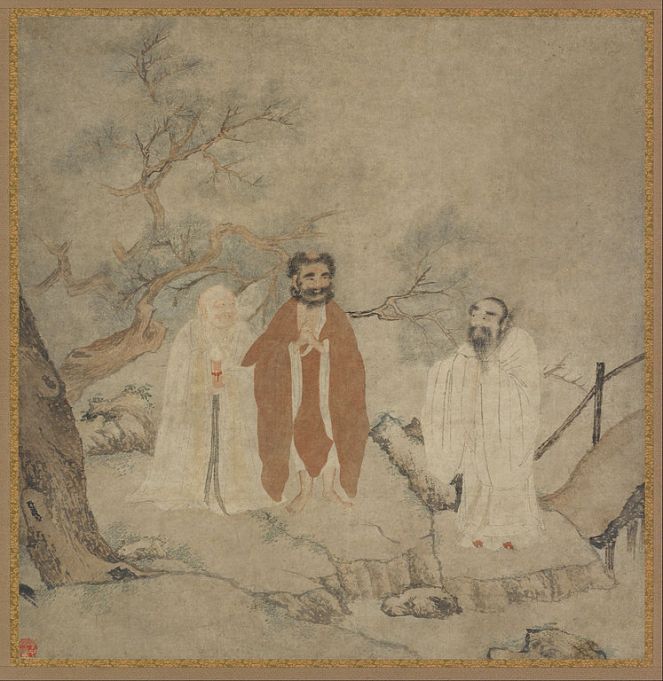
The Neptune Pluto conjunction in 578 BCE was at 8 Taurus, marking the height of the Axial Age. This period saw the start of classical Greek literature and the foundation of philosophy in the West with the teachings of Pythagoras and Socrates, as well as the prophesies of Jeremiah and the early Hebrew Bible. A similar transformation happened in the East with the teachings of the Buddha, Lao Tzu and Confucius.
These ideas represent a breakthrough in our perception of what it means to be human. The rational mind was starting to develop and we were asking questions about the world that led to new ways of organising society. Buddhism, for example, challenged the caste system of Hinduism, and the work of Pythagoras led to the development of abstract thought, such as mathematics.
This explosion of ideas seeded the development of the modern world and it took many years for them to take root and spread. They continued to develop as the following cycles unfolded and really took off with the Renaissance after the shift into Gemini.
The next conjunction was in 84 – 83 BCE at 15-16 Taurus. This cycle coincided with the rise of the power of Romeand its empire. It also saw the development of Mahayana Buddhism and the new idea of the Bodhisattva, providing balance to the earlier monastic Buddhism which emphasised personal liberation from the wheel of suffering. Christianity also took root during this cycle.
The Roman Empire lasted through the entire cycle but things started to unravel with the next conjunction in 411 – 412 CE at 22-23 Taurus. Christianity had become the official State religion just before this and paganism had been outlawed. But in 410 the Visigoths attacked Rome and destroyed the city. The Western empire lingered on but finally fell in 476, although the Byzantine empire continued. This cycle also saw the rise of Islam and the spread of its culture which bloomed into a golden age of learning and science that continued into the next cycle.
The next conjunction was in 905 – 907 at 27-28 Taurus marking the start of the High Middle Ages and the Medieval Warm Period which encouraged trade and culture to flourish. The Islamic Empire continued to spread and the Catholic Church responded with a series of crusades. This cycle also saw the rise of famine and disease which led to the spread of plagues that wiped out huge numbers of people. Ultimately, this paved the way for the Renaissance which started to build towards the end of the cycle.
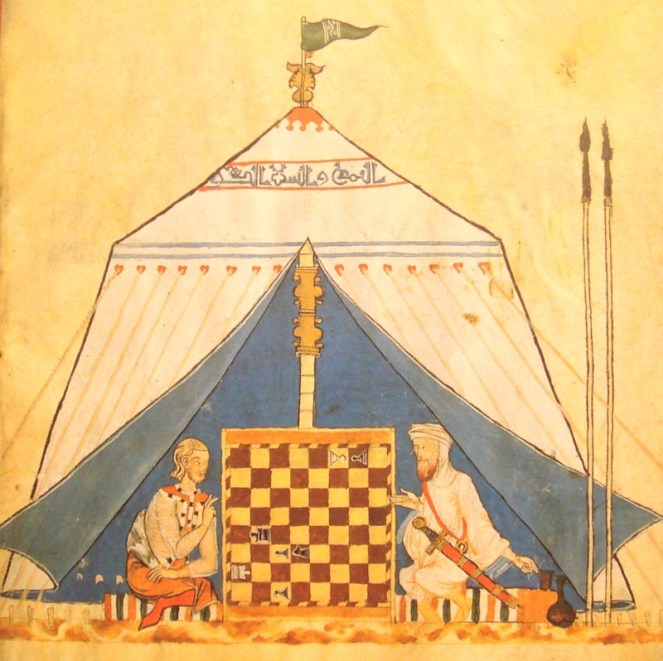
To see how these cycles work, we’ll look at the next one in a little more detail. New ideas and insights start with the conjunction and are explored and developed with the sextile, and challenged at the square, with further refinements at the trine. A peak in the civilisation comes at the opposition, and this is followed by a period of dissolution or change, depending on how well the ideas are working out.
We don’t necessarily see big events at the major turning points of the cycle, such as the conjunction or opposition. The changes tend to be more subtle and represent shifts in consciousness and thinking, with new ideas and possibilities that are explored as the cycle unfolds.
Here are the dates for last complete Neptune Pluto cycle:
- Conjunction in 1398 – 1399 at 2-3 Gemini
- Sextile in 1461 – 1481 and 1536 – 1540
- Square in 1568 – 1572
- Trine in 1594 – 1598
- Opposition in 1644 – 1647
- Trine in 1704 – 1739 and 1777 – 1785
- Square in 1816 – 1819
- Sextile in 1844 – 1845
- Conjunction in 1891 – 1892 – start of current cycle
The conjunction of 1398 – 99 was the first in Gemini, marking an important shift in consciousness and the halfway point in the longer 4000 year cycle. Uranus also opposed this conjunction from Sagittarius, first hitting Neptune in 1391-95 and Pluto in 1394-96, adding a revolutionary feel to the era. This cycle sowed the seeds for the current cycle of civilisation with the slow disintegration of religion and the gradual rise of science and rationalism.
It started with the birth of the Renaissance which came out of the destruction and death of the plague that brought an end to feudalism and the beginning of the erosion of Church power. The Catholic Church was already experiencing criticism due to corruption and the Great Schism with two rival popes which ran from 1378 to 1417.
New ideas seeded the growth of Protestantism which took off during the long sextile between 1461 and 1540. Martin Luther started the Reformation in 1517, and Henry VIII broke from Rome to set up the Church of England in 1534 leading to the dissolution of the monasteries in 1536.
Meanwhile in Italy, Lorenzo de Medici rose to power in Florence in 1469 to preside over a great explosion of cultural growth and new ideas. As patron of the arts and sciences he supported many of the key figures of the Renaissance, including Leonardo da Vinci and Michelangelo. Knowledge was spread through the printing press and the growth of universities leading to the rise of rationality, science, and humanism in the Scientific Revolution.
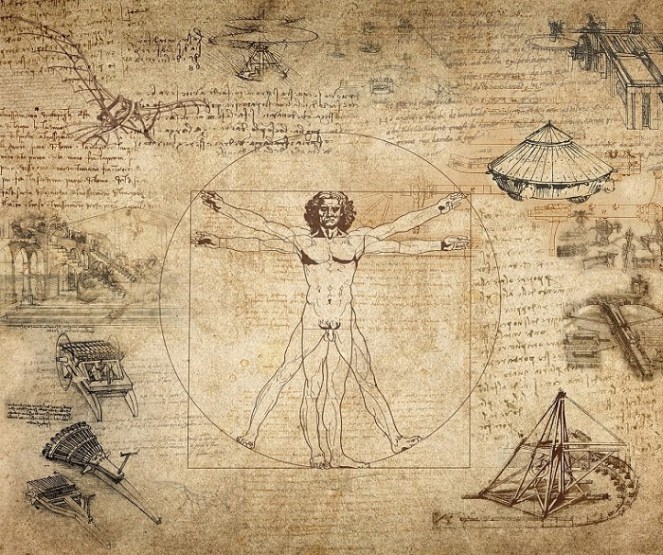
As the square of 1568 – 72 drew closer, the Catholic Church began its own Counter-Reformation in 1545 but this didn’t stop the ongoing battle within Christianity. This period saw the continued rise of Protestantism and Puritanism, and there were many social and religious rebellions.
By the trine in 1594 – 98 the Church was flexing its muscles by going after Giordano Bruno who was jailed in 1593 for supporting Copernicus’ ideas about the solar system. Copernicus had published his theory during the sextile in 1543. Bruno was executed in 1600, but there was no stopping the new ideas which were spreading through figures such as Francis Bacon and Shakespeare.
At the opposition in 1644 – 47 tensions within Christianity came to a bloody head with the English Civil War between the Puritans (Roundheads) and the Royalists (Cavaliers). The battlelines were drawn between the King and parliament but it was really a religious fight. Charles I was beheaded in 1649 and Oliver Cromwell became Lord Protector of the Commonwealth and made many Puritan reforms to the Church of England.
Meanwhile, there was a great outpouring of philosophy and new ideas based on rational principles in the Age of Enlightenment. Descartes published his Discourse on the Method in 1637 which had a huge influence on everything that came after it. The times were revolutionary and the people were agitating for greater equality and freedom as Uranus joined the opposition to Pluto with Neptune.
As the opposition faded, Charles II restored the monarchy in Britain when Cromwell’s experiment failed. But the revolution wasn’t over and the long waning trine of 1704 – 1785 saw enormous changes to power structures and nations. The American War of Independence ran from 1775 – 83 during the second half of this trine, while the French Revolution only got started as the final trine was fading.
All these revolutions were influenced by Uranus joining the party. It was conjunct Pluto during the first waning trine, and then moved round to oppose Neptune and sextile Pluto. During the second trine, Uranus was square Neptune and quincunx Pluto, and later moved round to oppose Pluto as the trine faded out, kicking off the French Revolution.
You can see how complicated this stuff gets! 😉
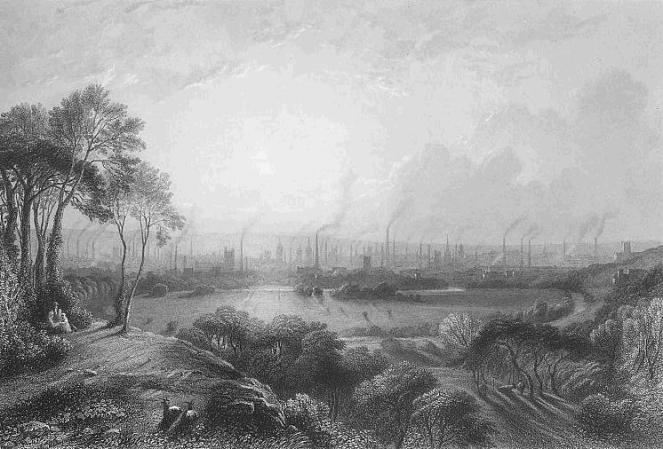
Back to the plot. At the waning square in 1816 – 19 religion was in serious decline and politics and social reform were rising. The Industrial Revolution was now transforming society and changing ideas about the purpose of mankind. There were early moves to abolish slavery, and new ideas developing about democracy, economics and socialism which really took off at the start of the next cycle.
Finally, at the waning sextile in 1844 – 45 the industrial revolution continued as the telegraph began to change how people communicated and the railways helped them get around more easily. Social reform gathered pace and groups of radicals were exploring the ideas of universal suffrage and equality. Marx and Engels met in 1844 and published The Communist Manifesto in 1848.
Neptune was discovered in 1846, just as the interest in Spiritualism was growing, and the Fox sisters started a craze for seances and mediums in 1848. Many spiritualists were also involved with reform movements such as socialism and women’s rights, with an emphasis on the importance of the individual. Appropriately, Uranus was conjunct Pluto in Aries in 1850.
As this cycle came to an end with the next conjunction in 1891, civilisation had been transformed. It had started with the expansion of the European empire through colonialism and the destruction of many non-European cultures and peoples. And it ended with the rise of rationalism and materialism in the Industrial Revolution, and the beginnings of spiritual materialism in the New Age.
Obviously there were similar transformations happening in other parts of the world too and a lot more can be said about the whole thing. If you’d like to explore this in more depth, the Historical Ephemeris site is a great place to start. For the Neptune Pluto cycle go here. I also recommend the Cycles of History site for in-depth historical analysis – Neptune Pluto section here.

Now we come to the current cycle which runs from 1891 to 2384. We’re still close to the start of this cycle so who knows where we’ll end up. Things probably won’t develop in the ways we’re imagining now. Here are the dates for the first half of the cycle:
- Conjunction in 1891-93 at 7-8 Gemini
- Sextile in 1950 – 1955
- Sextile in 1976 – 1984
- Sextile in 2026 – 2031
- Square in 2061 – 2065
- Trine in 2088 – 2091
- Opposition in 2137 – 2140
The conjunction in 1891 – 93 saw the continued development of the industrial revolution with many breakthroughs in science and technology, such as automobiles and the internal combustion engine, and early developments film and radio. Freud was busy exploring the unconscious and creating the new discipline of psychoanalysis that would transform how we see ourselves.
Science expanded with the development of quantum physics and relativity, chaos theory and fractal mathematics. The discovery of the observer effect finally emphasised (for the West) the central importance of consciousness in reality. The ideas of New Thought began to spread, along with the continued growth of Theosophy and the New Agewhich was transforming religion and spirituality.
By the time of the semi-sextile in 1916 – 17 we were mired in the first World War, and by the semi-square in 1930 – 32 we were deep into the Great Depression and the rise of Fascism in Europe. Clearly all was not well in the old imperial empires that rose to power during the previous cycle. Perhaps there was (is) something lurking in our subconscious…
The first sextile faded in from the early 1940s and was exact from 1950 – 55 with Neptune in Libra and Pluto in Leo. The second sextile more or less ran from the end of the first, becoming exact in 1976 – 84 and fading out into the 1990s with Neptune in Sagittarius and Pluto in Libra.
Since the 1950s we’ve seen the growth of a globalised culture with the spread of images worldwide through TV broadcasting and satellites, and now the internet. Modern art fragmented our perspectives and rock ‘n’ roll gave us wall-to-wall youth culture. Social reform exploded with the rise of mass movements, such as civil rights marches, humanitarian campaigns, and environmentalism.

Meanwhile, philosophy started to deconstruct itself with the rise of postmodernism which appears to have trigged a full-scale implosion of the rational Western mind. For a while it looked like the old religions were on the run, but soon a new fundamentalism took root on both sides of the science/religion divide. Science has now morphed into the new religion of scientism and we’ve almost come full circle.
The scientific revolution started out as genuinely evolutionary. It expanded our horizons, transformed our view of humanity and life, and freed people from the superstitions and dogma of religion. But it became distorted by power in its own right, just like the Church it sought to overthrow.
Back in the 14th century people were more embedded in their societies and didn’t really see themselves as individuals the way we do now (in theory). The collective vision of the Church dominated Europe and then spread itself around as those cultures embarked on imperial conquests. Now a new collective vision has taken over – that of science and humanism and the desire for freedom and democracy. Again, in theory.
The point is: We haven’t really changed. We’ve substituted one belief for another and still don’t know who we are. Science is useful, no doubt, but its view on reality is limited by hidden assumptions and it only gives us the illusion of self-knowledge. It may be that Lao Tzu, Socrates and Buddha, understood reality better than we do.
These days, many more people know about the Axial Age sages and their teachings. But what do we do with their wisdom? We put it on a T-shirt. Share it in a meme. A triumph of spiritual materialism.
As the final sextile fades into alignment, perhaps we can deal with the imbalances that have crept into our thinking and free ourselves from materialist assumptions about reality. That doesn’t mean throwing science out altogether – it means reconnecting with its true purpose and remembering that it’s a method not a belief system.
This sextile will be formed between Neptune in Aries and Pluto in Aquarius. Uranus will also be trine Pluto and sextile Neptune emphasising technological developments and the drive for personal freedom and awakening. Saturn will provide some grounding and a reality check when he conjuncts Neptune just before the first exact sextile with Pluto in 2026. More on those alignments at the above links.
At best, we have the potential to awaken to a deeper understanding of reality and consciousness which could work itself out through both science and spirituality. The previous cycles suggest we’ve been developing in the direction of greater wholeness and our globalised culture makes us aware of how interconnected we all are.
However, this awareness can easily be hijacked – as it has been so many times before. The fact that we’re all interconnected doesn’t mean we have to give up our individuality or our personal agency. Unity can’t be imposed. Falling into line with a totalitarian State or plugging into a hive mind won’t solve our problems.

If genuine wholeness and balance is suppressed it goes underground and will come out in explosive and violent reactions against whatever is suppressing it. The more we deny the need for humanity to work together in a genuine way, the more likely it is that the earth will force the issue. Our lack of responsibility and denial of reality will bite us on the arse in the form of environmental catastrophes and failure in our attempt to control reality.
We tend to assume that this Neptune Pluto cycle will continue with more of the same growth for the West that we’ve seen since 1398. But what if we’re wrong? The reality is we’re closer to where the Roman Empire was in 411 at the start of its second cycle. That period also coincided with the shift into a Jupiter Saturn air cycle, just like now.
We’re actually in the middle of the failure of the old industrial model and probably about to hit some kind of energy crisis. We’re also seeing the failure of our ideas and beliefs as they run up against reality. If we don’t correct our course now, we could be in serious trouble later. The first real test will come at the Neptune Pluto square in the 2060s but I don’t think the current system will last that long.
Sextiles are harmonious aspects that represent an opportunity to make positive changes, but we have to act on them to get the most out of it and that requires self-awareness and effort. What happens next is up to us.
Next time we’ll explore the alignment of Neptune and Uranus…
More 2020s Transits
Images: Sages; Chess; Manchester; Horse; VR
Thanks for reading! To support my work, donate below 🍵. Thanks in advance! 🙏❤️


Thank you for the long view, Jessica, and shining a light on some of the patterns of previous Neptune-Pluto (and sometimes Pals) meetups. The cycles and themes in hindsight make it easier for some to see the value of astrological wisdom.
LikeLiked by 1 person
This was reallly interesting. When looked at in hindsight its easy to see that over time religion was hijacked and merged with political interests. Christianity and state church have for the longest time been tied to citisenship and control. The powers that shouldnt be just shifted gears and science was turned into scientism as a means to hold onto power, but maybe they have run out of time and momentum.
LikeLiked by 2 people
Absolutely – I think it’s run its course – ready for a change…
LikeLike
That’s really interesting, I had no idea about this and it’s pretty sobering when you think about the timescales and what we’re facing.
LikeLiked by 2 people